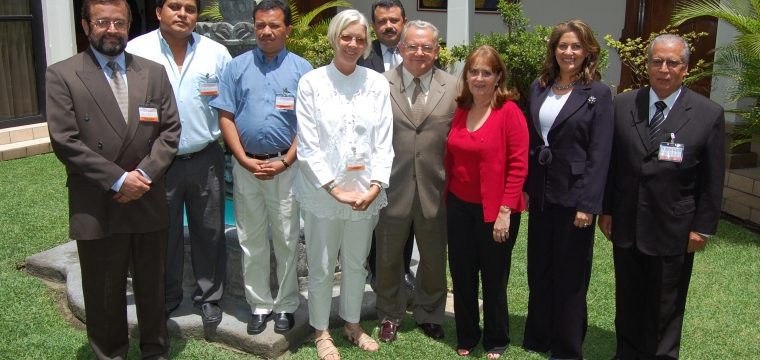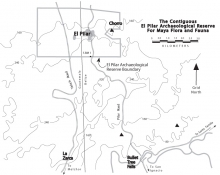Straddling the border of Belize and Guatemala, El Pilar, a designated Archaeological Reserve and Monumento Cultural, is on its way to becoming a bi-national Peace Park and a symbol of cooperation between these contentious countries. In this age of environmental crises, there is increasing interest in community commitment to conservation and government acknowledgement of the shared quality of resources. With population growth contributing to the fragmentation of the biodiverse Maya forest, co-management designs develop significant solutions that benefit governments and populace. El Pilar provides a concrete example of the need to establish co-management ventures ensuring common strategies to conserve vanishing resources of culture and nature in the Maya Forest.
Dramatic changes have come to villages and communities adjacent to the El Pilar Archaeological Reserve for Maya Flora and Fauna. Overall village population has increased considerably, and many individuals have left the community to seek gainful employment in urban areas locally nationally and abroad. Traditional farming has been marginalized as economic focus shifts to industrial agriculture. New land-use strategies have resulted in environmental degradation and concomitant decline in the quality of life.
The establishment of parallel management planning for one resource in two countries is the essential base from which the sustainability of El Pilar depends. Education at the local, government, and regional levels is absolutely key to the activities associated with the binational management planning process. The parallel plans are designed around three components: government requisites, assessment of the organization needs of the El Pilar Archaeological Reserve, and community participatory design for successful management. We now have contiguous reserve limits that bound 200 ha (5000 acres) in Belize and Guatemala, parallel plans developed and signed by the overseeing authorities in Belize and Guatemala, and corroborating agreements in archaeology of Belize and Guatemala. El Pilar has become a representation of peace and a future model in international management and conservation.


